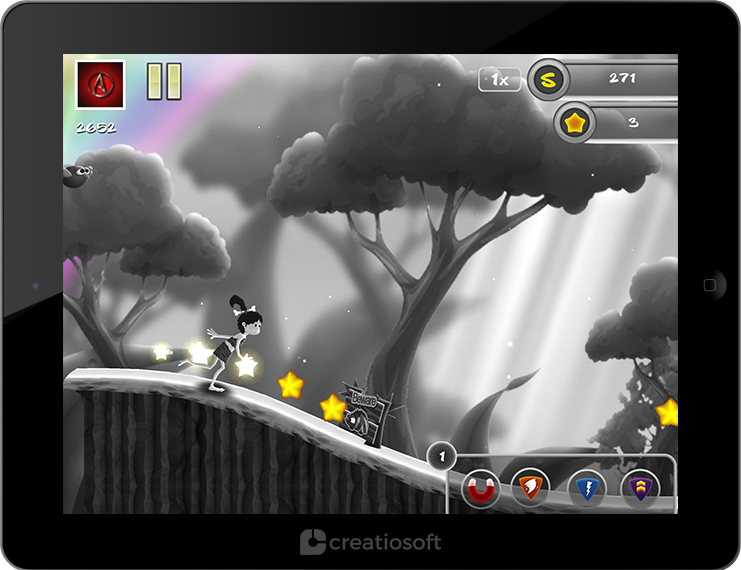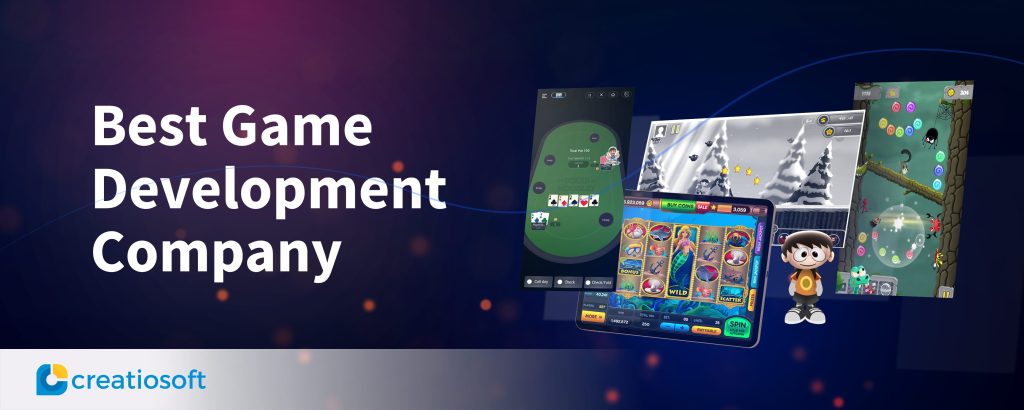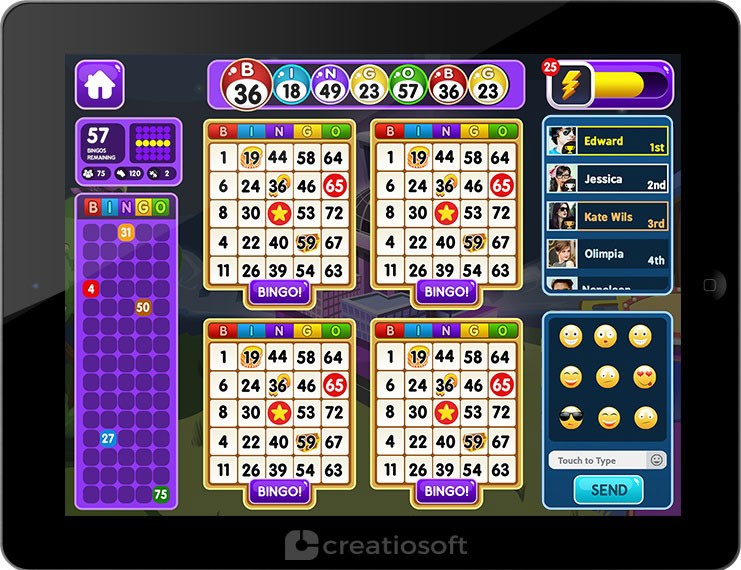In today’s digital world, online games are not just limited to the world of entertainment. These games have evolved into immersive experiences that captivate millions of players worldwide. Thus, the best game development company is leveraging advertisements via video games as an integral part of the gaming landscape. It is providing brands with a unique and immersive way to reach their target audience. As the popularity of video games continues to rise, so does the potential for advertisers to reach a highly engaged audience. In-game advertisements have emerged as a powerful marketing tool, seamlessly integrating brand promotions within gaming experiences. In this article, we will delve into practical tips and strategies for including advertising in video games to maintain a high level of player engagement.
Before starting with in-game ads, one must always be aware of the ecosystem. Thus, we are going to consider every concept around in-game advertisements. Then, we will look at how these advertisements are impacting the gaming ecosystem.
What do you mean by In-Game Advertisements?
When we say in-game advertisements, it suggests having advertisements inside a video game. It’s a way for companies to show their products or brands while you’re playing. Imagine if you’re playing a game set in a city, you might see big signs or posters with ads on them, just like in real life. Sometimes, the ios game development company brings ads for virtual products that players can use in the game. Such as Candy Crush, one of the most popular casual games uses these ads to provide boosters to the players for watching the ads. In-game advertisements can be different, like ads that stay the same all the time or ones that change while you’re playing. There can also be special events in the game that are sponsored by companies, or items in the game that have logos or designs from real-world brands.
The best game development companies in India are leveraging the several advantages of in-game advertisements. We are going to discuss the following advantages that are helping the gaming ecosystem.
Benefits of In-Game Advertisements:
Targeted Engagement:
The best mobile game development company considers in-game advertisements as the best medium for brands. As these brands can connect with a highly engaged and diverse audience with these ads easily. The ios game developers are customizing the advertisements to specific games or genres. This is helping the ios game development company to reach their target demographics more effectively. For example, a sports brand can promote its products within a popular sports game, capturing the attention of sports enthusiasts.
Enhanced Realism:
In-game ads contribute to the overall realism of the gaming experience. If ios game development company implement the in-game ads thoughtfully, then these ads can be seamlessly blended with the game’s environment. It also makes the virtual world feel more authentic. This immersive integration can strengthen brand recognition. It also indulges a positive association with the advertised products or services.
New Revenue Streams:
For game development companies in India, in-game advertisements provide an additional revenue stream. By partnering with brands, mobile game developers can monetize their games without solely relying on upfront purchase fees or in-app purchases. This can potentially lead to more accessible and affordable gaming experiences for players.
Interactive and Engaging Experiences:
In-game ads have evolved beyond simple visual placements. The mobile game development company now explores interactive and engaging approaches to captivate players. For instance, players can receive rewards with in-game currency or exclusive items for engaging with an ad. With this situation, it becomes profitable for both players and iOS game development company.
There are several types of in-game advertisements available. Let’s explore the different types of in-game advertisements.
Different Types of In-Game Advertisements
-
Static In-Game Advertisements:
Static in-game advertisements refer to the placement of fixed advertisements within a game environment. These ads are typically integrated into the game’s background, such as billboards, posters, or virtual product placements. By blending seamlessly with the game, static ads provide a subtle and non-disruptive means of brand exposure. They help create a more immersive experience while generating revenue for game developers and publishers.
-
Dynamic In-Game Advertisements:
Dynamic in-game advertisements take personalization to the next level by leveraging real-time data and technology. These ads can be modified or updated in real-time based on user demographics, preferences, or geographical location. For instance, billboards within a racing game might display different advertisements based on the player’s location. This flexibility allows advertisers to target specific audiences effectively and deliver more relevant content.
-
Native Advertisements:
Native advertisements focus on seamlessly integrating promotional content into the fabric of the game itself. Instead of standalone ads, native advertisements blend brand messages within the gameplay, storyline, or game assets. This type of advertisement often relies on subtle product placements or incorporating brand elements as part of the gaming experience. Native advertisements aim to enhance immersion and create a sense of authenticity, aligning the brand message with the game’s narrative.
-
In-Game Sponsorships:
In-game sponsorships involve partnerships between brands and mobile game development company/publishers to feature exclusive branded content. This can include branded in-game items, character skins, or even entire game modes themed around a particular brand. In-game sponsorships offer a win-win situation, benefiting both the brand and the iOS game development company by driving engagement and creating memorable experiences for players.
-
Advergames:
Advergames are games specifically designed to promote a brand, product, or service. Unlike traditional games, the primary objective of advergames is to engage players with the brand message rather than generating direct revenue. These games are often created as mobile apps or browser-based experiences and provide players with an interactive and entertaining way to interact with the brand. Advergames can be valuable for raising brand awareness and fostering positive associations.
Now we are aware of the type of in-game advertisements in the industry which are playing a crucial role in evolving the game development industry. We can lookout for the strategies and factors that should be kept in mind while leveraging this. Now, we are going to discuss the factors to be considered before implementing in-game advertisements.
Factors to Consider Before Implementing In-Game Advertisements
With the growing number of gamers worldwide, advertisers have recognized the immense potential of reaching a captive audience within the gaming environment. However, before implementing in-game advertisements, it is essential to consider various factors to ensure a successful and seamless integration. Here we will discuss the following key factors that iOS game development company and advertisers should consider before incorporating in-game advertisements into their gaming experiences.
-
Relevance and Integration:
One of the primary considerations for in-game advertisements is ensuring the relevance and seamless integration of the ads within the gaming environment. Players are more likely to engage with advertisements that are contextually relevant to the game’s theme, storyline, or setting. The ads should blend harmoniously with the overall aesthetic and gameplay, avoiding any jarring disruptions that could negatively impact the player experience. Advertisements that feel forced or out of place may lead to player frustration or even resentment.
-
Target Audience and Player Experience:
Understanding the target audience and their preferences is crucial when implementing in-game advertisements. Developers and advertisers should consider the demographics, interests, and gaming habits of the players. By aligning the ads with the player’s interests, advertisers can enhance engagement and create a more personalized experience. However, it is vital to strike a balance between monetization goals and the player’s experience. Intrusive or excessive advertising can negatively impact player retention and satisfaction.
-
Ad Format and Placement:
Choosing the right ad format and placement is vital for the success of in-game advertisements. Different game genres may require different ad formats such as static images, video ads, or product placements. The duration, frequency, and size of the ads should be carefully considered to prevent them from becoming disruptive or overshadowing the gameplay. Non-intrusive ad placements, such as billboards, posters, or branded in-game objects, can create a more immersive and natural advertising experience.
-
Monetization Strategy:
Developers must consider their monetization strategy when implementing in-game advertisements. They should determine the ideal balance between advertising revenue and user experience. A well-designed monetization strategy may involve a combination of in-game purchases, premium content, and targeted advertisements. Offering players the option to remove ads through a one-time purchase or in-game currency can provide an additional revenue stream while respecting player preferences.
-
Advertiser Partnerships and Brand Alignment:
The best mobile game development company in India and advertisers should establish strong partnerships to ensure the ads align with the game’s values and target audience. Advertisers should be carefully selected based on their brand image, reputation, and compatibility with the game’s themes. These game developers make sure to maintain the consistency between the advertised products or services and the game’s overall tone can enhance credibility and strengthen the player’s connection with the game world.
-
User Privacy and Data Protection:
Incorporating in-game advertisements requires the collection and utilization of player data. Developers and advertisers must prioritize user privacy and comply with relevant data protection regulations. Transparent disclosure of data collection practices, obtaining informed consent, and implementing robust security measures are essential to build trust with players. Anonymized and aggregated data should be used to avoid any potential breach of privacy.
-
Performance Monitoring and Optimization:
Regular monitoring and optimization of in-game advertisements are crucial for their effectiveness. The best game development company should track key performance indicators (KPIs) such as click-through rates, conversions, and player feedback to assess the impact of ads on player engagement and revenue generation. A/B testing different ad formats, placements, and targeting strategies can help optimize the effectiveness of in-game advertisements over time.
Best Practices for Effective In-Game Advertisements
The Android game development company always looks up for such opportunities that can monetize their games. However, mobile game developers must understand that implementing effective in-game advertisements requires a delicate balance between monetization and user experience. To achieve success, it is crucial to follow best practices that engage players without causing disruption.
-
Native Integration:
One of the most effective approaches to in-game advertisements is native integration. By seamlessly integrating brand messaging and products into the game environment, advertisers can create a more immersive experience for players. Native ads should align with the game’s aesthetics, storyline, and mechanics, blending in naturally without interrupting gameplay. This integration can be achieved through in-game billboards, product placements, or branded events.
-
Targeted and Relevant Ads:
To maximize the impact of in-game advertisements, it is essential to serve targeted and relevant ads to players. Understanding the player demographic and interests can help tailor advertisements that resonate with the audience. Leveraging player data and analytics can enable advertisers to deliver personalized ads that feel less intrusive and more engaging. By aligning ads with the players’ preferences, advertisers can increase the chances of capturing their attention and driving meaningful interactions.
-
Non-intrusive Ad Formats:
The placement and timing of in-game ads play a crucial role in maintaining a positive user experience. Intrusive ad formats that interrupt gameplay or appear abruptly can lead to frustration and annoyance among players. Advertisers should opt for non-intrusive ad formats, such as static billboards, sponsored items, or subtle background placements. These formats ensure that the flow of the game remains uninterrupted while still delivering brand messaging effectively.
-
Opt-in and Rewarded Ads:
Offering players the choice to engage with ads through opt-in or rewarded ad experiences can significantly improve the effectiveness of in-game advertisements. Opt-in ads allow players to choose whether they want to view an ad in exchange for a reward, such as in-game currency, power-ups, or exclusive content. Similarly, rewarded ads offer players incentives for watching ads voluntarily. By providing value to players and making ad engagement a choice, advertisers can foster a more positive perception of in-game advertisements.
-
Transparency and Disclosure:
Maintaining transparency and clear disclosure about the presence of in-game advertisements is vital for building trust with players. Advertisers should ensure that players are aware of the advertisement’s elements and that they understand the distinction between gameplay and sponsored content. Clear labelling, disclaimers, and visible notifications can help establish transparency, minimizing any potential negative impact on player experience.
-
Testing and Iteration:
As with any marketing strategy, testing and iteration are crucial for optimizing in-game advertisement campaigns. Advertisers should constantly monitor the performance of ads, gather player feedback, and analyze metrics to refine their approach. By testing different ad formats, placements, and targeting strategies, advertisers can identify what works best for their target audience and adapt their campaigns accordingly.
In-game advertisements present a promising opportunity for advertisers to reach highly engaged audiences within the gaming community. However, it is crucial to implement best practices that prioritize player experience while effectively delivering brand messaging. By focusing on native integration, targeted and relevant ads, non-intrusive formats, opt-in and rewarded experiences, transparency, and continuous iteration, advertisers can strike a balance that engages players without disrupting their gaming enjoyment.
Future Prospects of In-Game Advertisements
In-game advertisements have evolved from simple banner ads to sophisticated, targeted, and immersive experiences within the gaming world. The prospects for in-game advertising are appearing promising. With the emergence of virtual reality (VR) and augmented reality (AR), game development companies in India can create even more immersive and personalized experiences. Game developers and advertisers need to embrace this new advertising frontier, understanding the importance of delivering relevant, engaging, and non-intrusive ads that enhance the overall gaming experience. As the gaming industry continues to grow, in-game advertising will undoubtedly play a pivotal role in connecting brands with a highly engaged and diverse audience.
Advertising in video games presents a unique platform for brands to connect with their target audience. By understanding the gaming demographic, seamlessly integrating ads, ensuring contextual relevance, incorporating player rewards, and balancing revenue with player experience, advertisers can effectively leverage this medium while maintaining maximum readability and engagement. Staying updated on emerging trends and technologies is crucial for the Android game development company to unlock the full potential of this dynamic and captivating advertising channel. With the right strategies and a profound understanding of the gaming audience, the best game development companies in India can master the art of effective advertising in video games. It will lead the brand to grow to newer levels of success. Explore these strategies and seize the tremendous opportunities that await in the ever-expanding world of video game advertising.
Frequently Asked Questions
Q1 Are in-game advertisements intrusive to the gameplay experience?
A1: In-game advertisements have evolved to become less intrusive over time. Modern techniques focus on native advertising, where ads seamlessly blend into the game environment without disrupting gameplay. These ads are designed to enhance the realism and immersion of the game, providing a more organic and less obtrusive advertising experience.
Q2: Can in-game advertisements be skipped or blocked?
A2: In-game advertisements can vary in their level of interactivity and skippability. Some ads may be integrated into the game environment in a way that cannot be skipped, while others may offer players the option to interact or skip after a certain duration. Ad-blocking within games is possible but less common compared to traditional web browsing. Game developers and advertisers typically aim to strike a balance between ad exposure and player engagement.
Q3: Can in-game advertisements be integrated into esports and live streaming?
A3: Yes, in-game advertisements can be seamlessly integrated into esports events and live-streaming platforms. Advertisers can sponsor esports tournaments, display branded banners or logos during live streams, or even have product placements within the games being played. Esports and live streaming provide advertisers with a massive audience and an opportunity to engage with passionate gamers in real time.
Q4: How do game developers ensure that in-game advertisements align with the game’s theme?
A4: Game developers and advertisers work closely to ensure that in-game advertisements align with the game’s theme and maintain immersion. Advertisements undergo a review process to ensure they fit within the game’s context and do not disrupt the overall experience. Collaboration between game developers and advertisers is crucial to strike the right balance between monetization and maintaining the integrity of the game world.
Q5: Are there any regulations or guidelines for in-game advertisements?
A5: Regulations and guidelines for in-game advertisements can vary by region. Advertisers and game developers need to comply with local advertising and consumer protection laws. Additionally, platforms and storefronts may have specific policies regarding in-game advertisements. Adherence to transparency, disclosure, and privacy regulations is essential to maintaining a positive relationship with players and ensuring ethical advertising practices.
Q6. How can I contact Creatiosoft for implementing the in-game advertisements?
A6: You can connect with us through the contact form available at creatiosoft.com. You can also send an email directly to sales@creatiosoft.com or WhatsApp or call us at +91-8860912115.
We will revert you by mail or call you for your request.


















